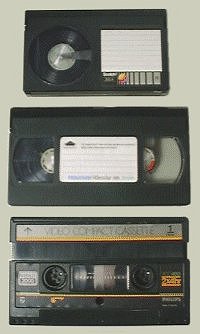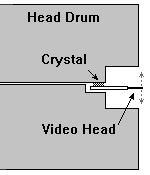During the course of the 1970's, Philips, in Holland, and their German associates Grundig continued to
develop the VCR format, increasing both the record/playback time and the quality of the images, and adding more and more
features to their already sophisticated machines.
This development spawned VCR-LP and
SVR, but by the end of the seventies
Philips were promising the imminent arrival of a remarkable new format. This was called VCC, for Video Compact Cassette,
but is more usually known as Video 2000.
(Philips also invented the standard music cassette format, which they called ACC -- Audio Compact Cassette.
This name didn't catch on either!) |
Despite missing several launch dates, when V2000 finally arrived in 1980 it was indeed as revolutionary as they had
promised. Alone of all video cassette formats, VCC tapes could be turned over, just like audio tapes. This meant that
a cassette almost exactly the same size as a VHS tape could hold six or even eight hours, in total. A later version with
long play increased this to a staggering 16 hours!
Betamax
VHS and
V2000
cassettes
V2000 machines were also extremely sophisticated, using microprocessor control for all manner of trick-play and
programming features. Perhaps the most advanced feature of all was Dynamic Track Following, or DTF; this was an
automatic tracking system which moved the heads as they scanned each track: |
 |

